Hyacinth is a very beautiful plant that can be grown both outdoors and at home. In its homeland, in Asia Minor, it begins to bloom during the period of warm rains, which is why it got its name.
In order for the inflorescences and vegetative parts to fully form, it is necessary to dig up this flower every year, store the planting material in certain conditions, and plant it in a timely manner. So when and how to plant a plant so that it grows healthy and strong?
Features of growing hyacinths
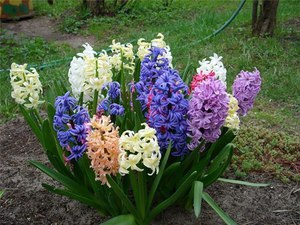 Many gardeners are interested in the question: how to plant a flower without harming it? Since it is considered thermophilic, it must be planted in a place that is well illuminated by the sun's rays.
Many gardeners are interested in the question: how to plant a flower without harming it? Since it is considered thermophilic, it must be planted in a place that is well illuminated by the sun's rays.
It grows naturally in very hot climates. The bulbs do not have a protective and dense peel, so excessive moisture contributes to their decay. It is necessary to plant a plant only on a flat area, without pits and depressions.
Flower prefers soil lightweight, loose and breathable... Many growers lay out a drainage layer on the bottom, forming high rows. Winds and drafts can destroy the plant, so the planting site should be well protected from the winds.
To ensure simultaneous flowering, the bulbs should be the same size and planted at the same level.
Sandy loam soil that is used to grow hyacinth must necessarily contain nutrients. To improve heavy soil, you need to add sand and organic matter.
To prevent infection of the plant with various pests, it is necessary to change the place of the flower bed from time to time. It is recommended to do this every year. It can be planted in its original place only after three years. It is not recommended to grow the flower after other bulbous crops such as:
- tulips;
- crocuses;
- daffodils.
Planting and care in the open field
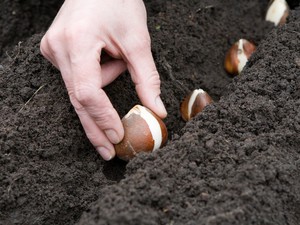 This flower is a versatile plant that can grow well both on the windowsill and in the open field. In order for it to please with its magnificent flowers, you must adhere to certain rules.
This flower is a versatile plant that can grow well both on the windowsill and in the open field. In order for it to please with its magnificent flowers, you must adhere to certain rules.
Before planting a plant, you must prepare a place for it in advance. Such a site should be well lit and be calm. You can plant hyacinth on small slopes, as the accumulated water in the ground contributes to the appearance of a fungus, which is rather difficult to remove.
An ideal place is considered to be a site near bushes and trees, but not very close to them. If planting is carried out in spring, then the soil should be prepared in advance, in August. It is recommended to feed it minerals and rotted manure.
For abundant flowering, it is advisable to use the following fertilizers:
- Superphosphate.
- Potash fertilizers.
- Magnesium sulfate.
Instead of potassium, ash can be used, and instead of magnesium - dolomite flour.
Features of planting hyacinths in spring
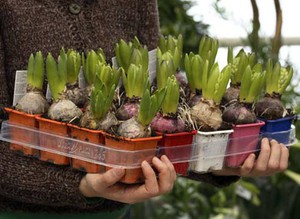 Many gardeners are interested in: when to plant hyacinth in open ground - in spring or autumn? Most often they do this in the autumn, but some prefer to plant in the spring.In this case, a sandy cocoon is created, which is sprinkled with earth.
Many gardeners are interested in: when to plant hyacinth in open ground - in spring or autumn? Most often they do this in the autumn, but some prefer to plant in the spring.In this case, a sandy cocoon is created, which is sprinkled with earth.
In order for the plant to begin to bloom in the same year, it is necessary an hour before plantingput tubers in the freezer, but overexposure is not recommended.
Disembarkation must be done after when the threat of frost will pass... To prevent the harvested soil from being washed away by the rains, the soil must be covered with leaves or thin plywood sheets.
The bulbs must be healthy and medium-sized - in this case, the flower will be more resistant to bad weather conditions. They should be planted to a depth of about 15 cm with a row spacing of 20 cm. Bulbs smaller than 5 cm in diameter should be planted thicker.
River sand is poured into each hole with a layer of three cm, after that lay the bulbs and sprinkle with soil... Sand is necessary in order to protect the planting material from infections and waterlogging.
If planting is carried out in large quantities, it is best to make high beds, then caring for this plant will become much more convenient. When it gets cold, the flower must be covered with peat or sawdust.
Top dressing
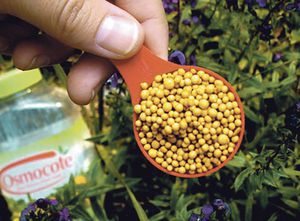 After the hyacinth has been planted, it must be fed, since nutrients are required for the normal development of the bulbs.
After the hyacinth has been planted, it must be fed, since nutrients are required for the normal development of the bulbs.
These are, first of all, mineral fertilizers, which are applied in the spring, when the snow has completely melted. The best and most effective are considered ammonium nitrate and potassium chloride.
As soon as the buds appear, a second feeding is carried out with mineral nutrients. For the third time, only potassium chloride should be added. It is recommended to loosen the soil each time so that the roots receive as much air as possible.
It is important to observe the following care guidelines:
- Be sure to remove weeds that can destroy the plant.
- Flowers are watered abundantly, but infrequently.
- Diseased specimens must be removed and burned, otherwise diseases and pests will spread to other plants.
Protection from harmful factors
 When this flower is taken care of in the wrong way, it can lead to dire consequences. For example, due to lack of light and excessive moisture, the leaves begin to turn yellow and stretch in length.
When this flower is taken care of in the wrong way, it can lead to dire consequences. For example, due to lack of light and excessive moisture, the leaves begin to turn yellow and stretch in length.
If water gets on the buds, they may not open. If they are absent at all, then this may be due to planting too small bulbs or their content.
Hyacinths can hit bacterial rot, which can, after a while, turn the bulbs into mucus with an unpleasant odor.
Fighting this trouble is useless, so the plant should be dug up and burned, and the place where it was planted is necessary pickle with bleach or 5% formalin solution.
Thus, we can conclude that it is possible to plant a plant in open ground in spring. The main thing is that there are no more frosts on the soil. Proper care of it will allow you to grow a gorgeous plant with very beautiful flowers in the garden that will delight the eye for a long time.
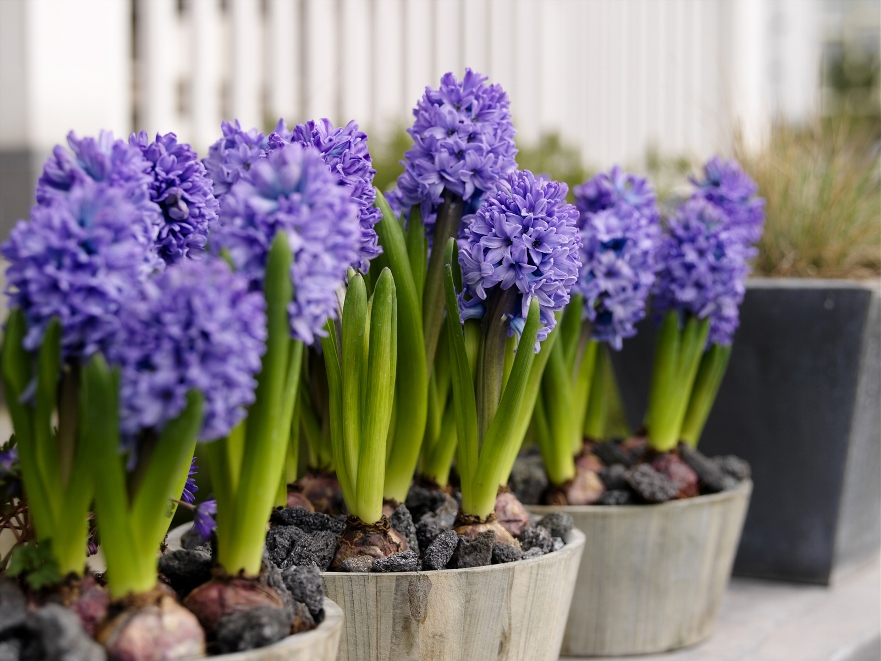
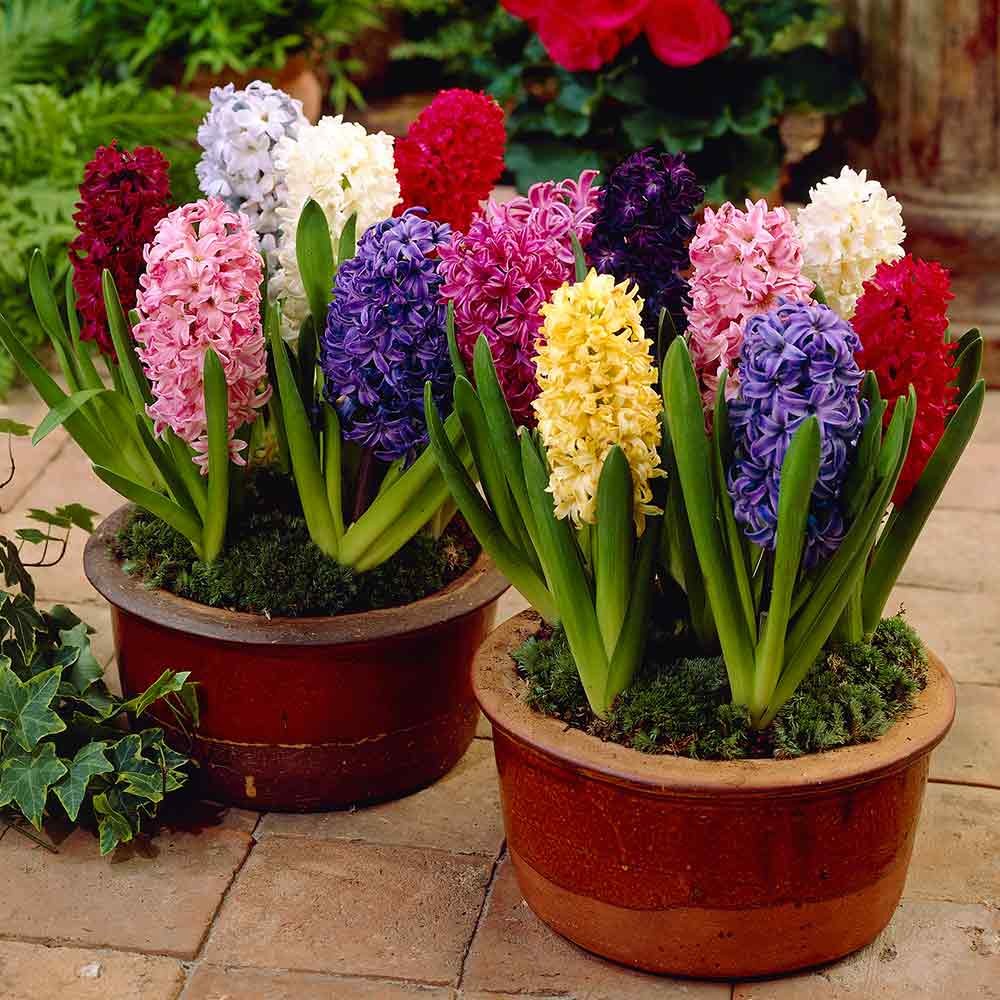

2 comments